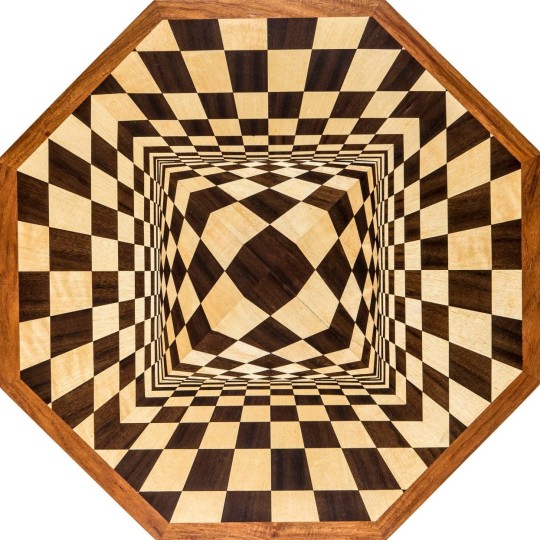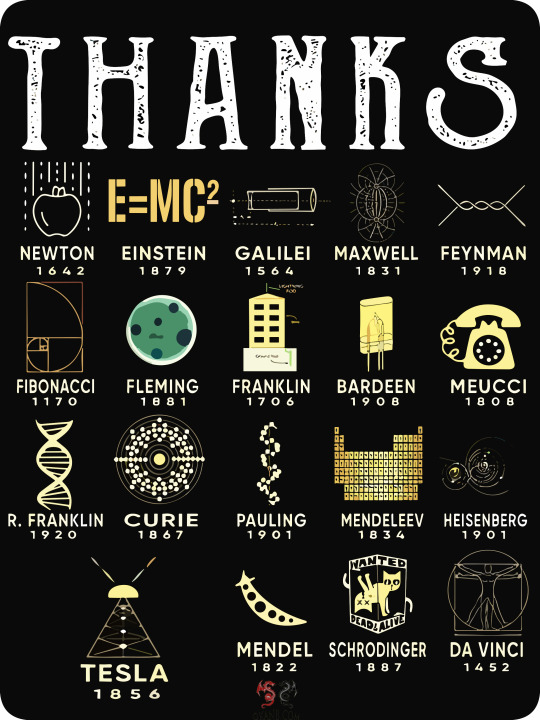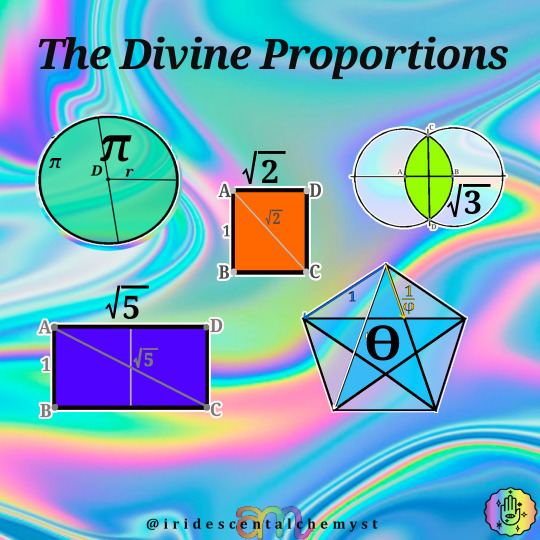#Leonardo Fibonacci
Explore tagged Tumblr posts
Photo

Michael Cheshire — Fibonacci Pyramid [Silver Ash, Queensland Walnut, Rosewood, 2007]
379 notes
·
View notes
Text

#isaac newton#albert einstein#galileo galilei#james clerk maxwell#richard phillips feynman#leonardo fibonacci#sir alexander fleming#benjamin franklin#john bardeen#antonio santi giuseppe meucci#rosalind franklin#marie skłodowska curie#linus carl pauling#dmitri ivanoviç mendeleyev#karl werner heisenberg#nikola tesla#gregor johann mendel#erwin rudolf josef alexander schrödinger#leonardo di ser piero da vinci#thanks#science
73 notes
·
View notes
Text
#cij#dolf wega#leonardo fibonacci#(THE OTHER ONE)#leonardo cij#mariecke cij#peter cij#carolus cij#nicolas cij#feel free to vote even if u dont know the characters#though if leonardo doesnt win theres no justice in the world
3 notes
·
View notes
Text
Fibonacci, Julia Robinson and Hilbert's 10th Problem
Fibonacci Day is November 23rd, and celebrates the work of medieval mathematician Leonardo of Pisa. We have no solid dates on Leonardo, but 11-23 was chosen as those are the first numbers in the sequence. In honour of the day, Science Magazine published an article on an American mathematician who utilized the Fibonacci series to solve German mathematician David Hilbert’s 10th problem of his…

View On WordPress
#Bucket with a Uranian Handle Planetary Pattern#Fast Mental Chemistry#Leonardo Fibonacci#Line of Vitality opposite#North Node in Scorpio
0 notes
Text
As you may or may not know, one of Rise Donnie's battlecries is "Fibonacci", referring to the mathematical sequence.
In the Fibonacci sequence, each term is the sum of the previous two. (1, 1, 2, 3, 5, 8, 13...)
But there's another sequence that does something similar! A twin, if you will.
In this sequence, each term is the sum of the previous two... and one. (1, 1, 3, 5, 9, 15, 25...)
These are known as the Leonardo numbers :)
#for those wondering#the first two terms are specified to be one for both sequences#but yeah#rottmnt#disaster twins#tmnt donnie#tmnt leo#maths#fibonacci sequence#leonardo numbers
341 notes
·
View notes
Text




Leonardo Pisano Bigollo
aka Fibonacci
Fibonacci was an Italian mathematician from the Republic of Pisa, considered to be the most talented Western mathematician of the Middle Ages. He is best known for the number sequence which bears his name: 1, 1, 2, 3, 5, 8, 13, ... (the Fibonacci Sequence).
He is also responsible for popularizing the Arabic numerals which we still use today. He explained the decimal system in a book called "Liber Abaci".
It has been said that the Fibonacci Numbers are nature's numbering system and that they apply to the growth of living things including cells, petals on a flower, wheat, honeycomb, pine cones, and so much more.
Why is today Fibonacci Day? The date of course--1123...!
14 notes
·
View notes
Text

La proporción áurea se define como la división de una línea en dos segmentos, donde la relación entre la longitud total y la parte más larga es la misma que la relación entre la parte más larga y la más corta. Esta fórmula se encuentra en la naturaleza, la arquitectura y el arte, sugiriendo una conexión intrínseca entre las matemáticas y la estética.
Leonardo da Vinci: En su famoso dibujo del "Hombre de Vitruvio", Leonardo aplicó la proporción áurea para ilustrar las proporciones ideales del cuerpo humano.
La proporción áurea ha sido utilizada en la creación de obras maestras como la Mona Lisa y el diseño de la secuencia de Fibonacci.
Esta proporción no solo se encuentra en objetos físicos, sino también en fenómenos como las ondas de sonido y las galaxias espirales.
#proporción áurea#pensamientos#frases#sabiduria#conocimiento#filosofía#arte#división#segmentos#arquitectura#conexion#intrínseca#leonardo da vinci#mona lisa#escultura#relación#longitud total#proporción#secuencia de Fibonacci#ondas de sonido#galaxias espirales#cultura
6 notes
·
View notes
Text

Spiral Waves
#art#ai artwork#william t. ayton#ai art#ai generated#artists on tumblr#ai#leonardo ai#visionary#mystical#spiral#fibonacci
2 notes
·
View notes
Text
Divine Proportions and The Fibonacci Sequence
Merriam Webster (2023) defines geometry as “a branch of mathematics that deals with the measurement, properties, and relationships of points, lines, angles, surfaces, and solids.” To that I would add mention the notion of shapes and equations that rise above our three-dimensional world. Sacred comes from Latin sacrare “to make sacred, consecrate; hold sacred; immortalize; set apart, dedicate,”…

View On WordPress
#Architecture#Art#divine#divine proportions#Fibonacci#Fibonacci Sequence#Fibonacci Series#Golden Mean#Golden Measure#Golden Rectangle#Golden Section#Labyrinth#Leonardo da Vinci#mathematics#Pascals Triangle#Pentagram#Phi#Pi#s#Sacred Geometry#Spiral#Spiritual Awakening#Spirituality#Square Root of 2#Square Root of 3#Square Root of 5#Vitruvian man
3 notes
·
View notes
Text
Something something mutant magic something something fusion au
Fuckin uhh, donnie and leo are Fibonacci, or fib for short, because i CAN, and they have all the issues ever probably, as well as leos romantic love for usagi and donnies lack thereof making for funny goofy dynamics BOOM. Silly.



And usagi and leo are shishigashira, or shishi for short. For uhhh, reasons?? It has some stuff to do with leo being the lion sign and it being Japanese and KJHIJNICFNIEJCDN. I dont fully remeber just look at the silly


And he's blonde because of course he is.
Ok disater twins legsagi fusion au post over 😎 *cool explosion gif*
Oh yeah this au is vv inspired by @teenagenutant ‘s fusion mayhem au! Its great check it out it’s loads cooler then mine
#bear bitch#oh gosh here we go#rottmnt#rise of the teenage mutant ninja turtles#rottmnt oc#kinda#we’ve been over this#yuichi usagi#kinda but not really#He’s my oc but view him however you want idc#usagi yojimbo#oc: Natsuki Usagi#there he is#implied leosagi#oc: Shishigashira#oc: Fibonacci#rise donnie#rottmnt donatello#rise leo#rottmnt leonardo#rise usagi#again#kinda.#fusion#fusion au#disaster twins#anddd#anti t-cest
6 notes
·
View notes
Text
The Tail of the Fibonacci Chameleon
.By T. V. Antony Raj Patterns in nature are visible regularities of form found in the natural world. These patterns recur in different contexts and can sometimes be modelled mathematically. Natural patterns include symmetries, trees, spirals, meanders, waves, foams, tessellations, cracks and stripes. Spirals are common in plants and in some animals, notably molluscs. With its colourful tail,…

View On WordPress
0 notes
Text
-----
Io non so se Dio esiste ma di certo il signor Leonardo Fibonacci era sicuramente un genio.
E pensare che la introdusse per dare una descrizione regolare e numerica della crescita mensile di una popolazione di conigli.
E tutto a cavallo del 1200, incredibile...
141 notes
·
View notes
Text
How Math Shapes the World: From Architecture to Art
Mathematics isn’t just about abstract theories or dry calculations; it’s the language of the universe, subtly embedded in the physical world around us. From the elegant designs of architecture to the rhythm of music and the delicate brushstrokes of an artist, math shapes our experiences in ways we often take for granted.
1. The Golden Ratio in Architecture and Art
The Golden Ratio (ϕ), approximately equal to 1.618, is a mathematical constant that appears repeatedly in nature, art, and architecture. Its appeal lies in its aesthetic balance, and Leonardo da Vinci’s Vitruvian Man is one of the most iconic examples of its application in art. The ratio can be used to guide proportions in a painting, sculpture, or architectural structure, creating a visual harmony that our brains naturally find pleasing.
One of the most striking examples in architecture is the Parthenon in Athens, where the ratio of the height to the width of the façade is approximately 1.618. Modern architects like Le Corbusier even integrated the golden ratio into their designs, believing it offered a universal sense of beauty. Today, this ratio isn’t just found in art or ancient monuments; web design uses ϕ to create aesthetically balanced page layouts.
2. Symmetry and Fractals in Nature and Design
Symmetry, in both mathematics and nature, reflects a fundamental principle of balance and harmony. From the perfectly mirrored wings of a butterfly to the geometric patterns in snowflakes, symmetry offers a mathematical blueprint for the shapes we see around us. Mathematically speaking, symmetry can be classified into various types, such as reflective symmetry (as seen in the human body) and rotational symmetry (as seen in many flowers).
Fractals, too, are ubiquitous in both nature and design. A fractal is a complex geometric shape that can be split into parts, each of which is a reduced-scale copy of the whole. This self-similarity at different scales is seen in the branching of trees, the formation of coastlines, and clouds. Fractal geometry was formalized by Benoît B. Mandelbrot and has revolutionized how we understand complex, irregular shapes. In architecture, fractals can be used to create dynamic, organic designs that mimic the natural world, resulting in structures that appear both innovative and harmonious.
3. The Influence of Mathematical Patterns in Music
Mathematics and music share a deep connection, with rhythm, harmony, and scale all tied to mathematical principles. Musical scales are based on frequencies that correspond to ratios—the distance between notes, which we perceive as intervals, are defined by ratios of frequencies. For example, the ratio of frequencies between notes in an octave is 2:1, while a perfect fifth is defined by a 3:2 ratio.
Fibonacci sequences are present in music composition as well. Béla Bartók, one of the 20th century's most important composers, consciously employed the Fibonacci sequence in his music. The length of musical phrases and timing can follow this sequence, creating rhythms and structures that feel both surprising and satisfying. The time signatures themselves are often governed by mathematical patterns—4/4, 3/4, and 7/8 are all examples of rhythmic structures that emerge naturally from mathematical ratios.
4. The Role of Geometry in Visual Arts
The application of geometry in visual art is far from new. In fact, geometry is foundational to many art movements, including Cubism and Abstract Expressionism. Artists like Pablo Picasso and Georges Braque were influenced by the principles of non-Euclidean geometry, breaking traditional representations of space and form. In Cubism, geometric shapes like cubes, rectangles, and triangles were used to represent objects from multiple viewpoints simultaneously.
M.C. Escher, known for his mathematically inspired works, created mind-bending images of impossible objects, tessellations, and transformations. His iconic "Relativity" uses geometry and symmetry to create a world where gravity is subjective, bending space and time to his will.
5. The Intersection of Math and Structural Engineering
Behind every skyscraper, bridge, and tower, there’s a solid foundation in mathematics, particularly in structural engineering. Architects and engineers use complex geometry and calculus to ensure buildings can withstand external forces like wind, gravity, and seismic activity.
The design of the Eiffel Tower, for instance, is based on optimization theory—the structure’s weight and dimensions were mathematically calculated to provide the maximum strength while minimizing material use. The use of parabolic arches in Roman architecture was no accident; these arches are not only aesthetically pleasing, but also mathematically efficient, distributing weight evenly across the structure and making it stable under heavy loads.
#mathematics#math#mathematician#mathblr#mathposting#calculus#geometry#algebra#numbertheory#mathart#STEM#science#academia#Academic Life#math academia#math academics#math is beautiful#math graphs#math chaos#math elegance#education#technology#statistics#data analytics#math quotes#math is fun#math student#STEM student#math education#math community
9 notes
·
View notes
Text
Leonardo Fibonacci da Pisa is really just the character ever. He’s sarcastic as fuck. He’s kind. He’s loyal to the bone. He bullies his friend for being a heretic (affectionately). He fought a bear (and won). He has a pet donkey. He is a math student. His weapon of choice is a giant wooden club. He is a Rich Kid™. He has a body count. His best friend is a weird kid that he met in the woods and would die for. He is described as having a good fashion sense. He has a complicated relationship with his parents. He’s even Italian
3 notes
·
View notes
Text
Was Informing Leo about Fibonacci Day and his ass GROANED UNTIL I MENTIONED THE GUYS NAME WAS LEONARDO.
#rottmnt#rottmnt donnie#rise of the teenage mutant ninja turtles#rise donnie#unpause rise of the tmnt#rise of the tmnt#rottmnt leo#rise leo#disaster twins#save rise of the tmnt
63 notes
·
View notes
Text
Spiral Aloe, Kangaroo Island, Australia
© Michael Melford
Alamy

Fibonacci Day, an occasion in which mathematicians and scientists pay tribute to one of the greats: Leonardo Bonacci, better known as Fibonacci. This medieval mathematician is famous for popularizing the Hindu-Arabic numeral system, which uses zero, decimal points and ten digits, replacing the heavy system of Roman numerals. But, his greatest recognition comes from his famous sequence of numbers: 0, 1, 1, 2, 3, 5, 8... Adding the first two numbers, the third is obtained; adding the two previous numbers, the next one is obtained, and so on. Leaving aside the zero, the first four numbers of the sequence coincide with today's date: 11/23.
#Michael Melford#alamy#Spiral Aloe#Kangaroo Island Australia#artists photographie#art#original art#original photographer#photographer#art style#art gallery#art work#colors nature#natural color#art color#de tot#fotos art#xpuigc#xpuigc bloc
7 notes
·
View notes